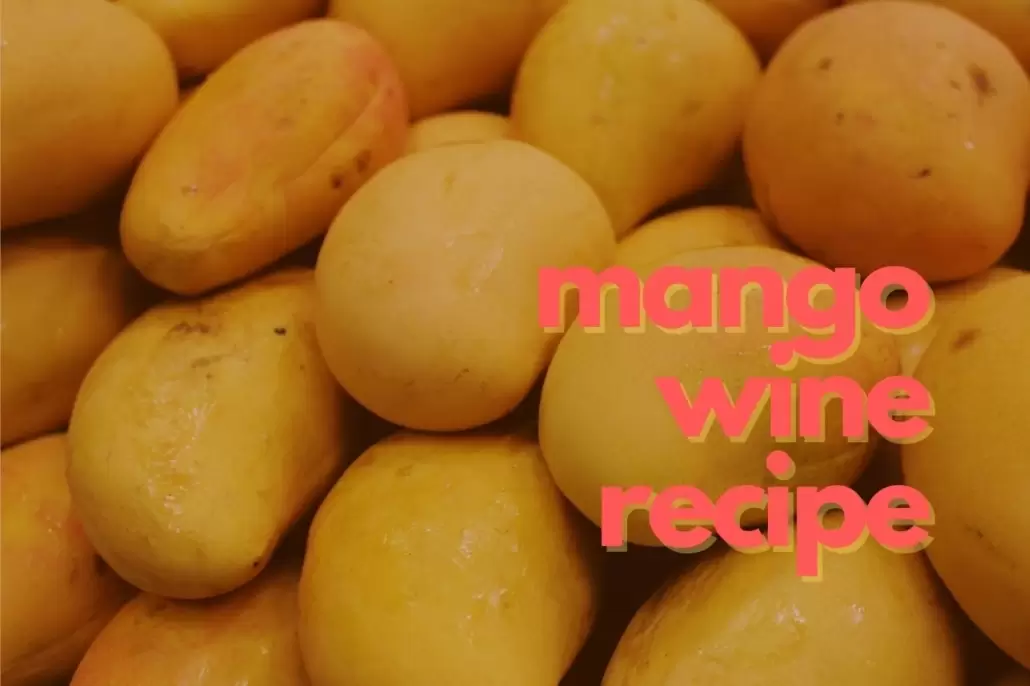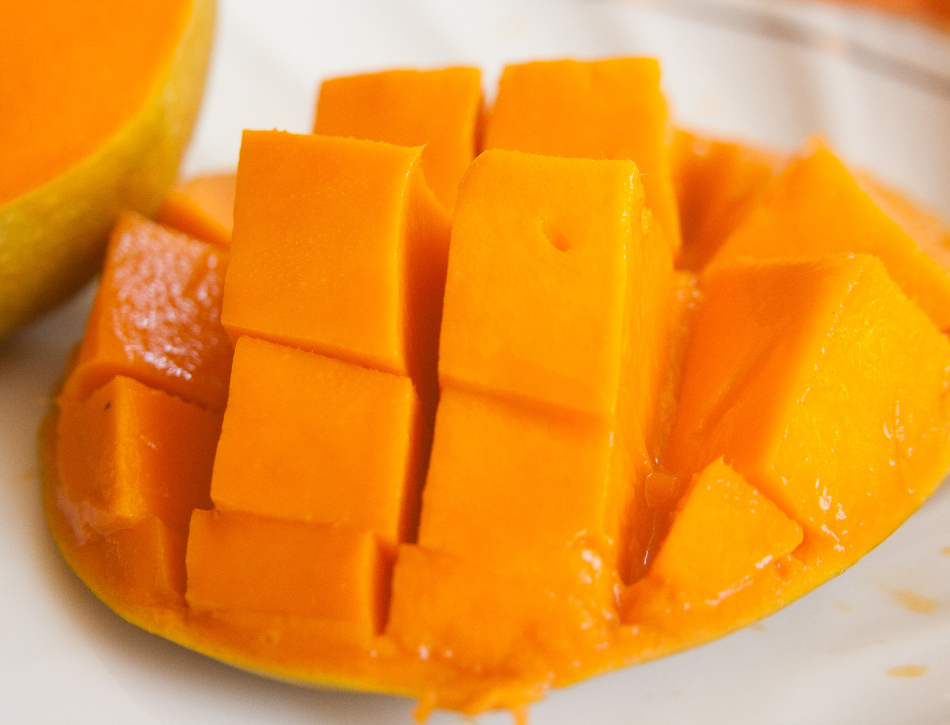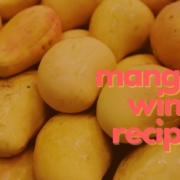Mango Wine Recipe – Tropical & Golden Wine

Mango is one of my favourite fruits. I love that tropical, sweet, juicy flavour and although I have used it in beer and mead I have hadn’t made a mango wine until recently.
Mango wine is bright, golden yellow and has that tropical flavour unique to mango.
You might be thinking about having to deal with cutting up all that fruit and removing stones which you will have to if you use fresh mango but I have a secret … you can make this wine with tinned mango puree and it is just as nice.
I live in the UK so fresh mangos aren’t always that great. They are not fully ripe, can be fibrous and piney. If you can get nice, fresh mango then this is great for making wine. If not you may be better off using either frozen or tinned mango.
Table of Contents
Using Fresh Or Canned Mango
The beauty of using mango in a wine is that it can really be made year-round by using canned / tinned mango puree that is often sweeter and tastier than using fresh mango.
When we make a wine we want the fruit to be in peak ripeness so the sugar is at its highest point. Depending on where you live mango may have to be imported a long way and spend time in transit so it is not necessarily that ripe when you get it.
Mango will ripen after being picked so you do have an opportunity of using fresh fruit, keeping it all till it ripens and is nice and sweet before making wine. I have made this mango wine with both fresh mango and canned mango puree and they both turn out equally good so depending on where you live you may find it easier and cheaper to use mango puree.
Using Fresh Mango To Make Wine

To use fresh mango in this wine you will need around 1 kilo of fruit after the stones and skin has been removed. 1 kilo of mangos will be around 7 or 8 fruits.
To prepare the mango for making wine you will need to remove the stone. As the stone is flat I find the easiest way to do this is as follow:
- Slice each side of the stem and as closely around the stone as possible
- Take each side and score the flesh into small squares and then push this flat and cut the flesh away from the skin.
- Run a knife around the stone to remove this small amount of mango and slice away the skin.
You will have to do this for all the fruit so by the time you have finished you will get pretty good at it. If this sounds like too much hard work then you might want to consider using canned mango puree.
Using Canned Mango Puree
When using canned mango you just need to make sure that what you are buying is free from preservatives. Usually, canned mango will have been sweetened and have citric acid added to them and this is fine to use, the acid is what preserves the mango and we actually need acid in the wine.
In my experience, you will be able to find two types of canned mango puree and these will be either Kesar mango or Alphonso mango. I like to use alphonso mango puree as this has a bold, sweet flavour and Kesar has a milder more delicate flavour. You can use either variety if only one is available in your area.
The beauty of using canned mango puree is you can simply open the can and start making the mango wine right away, there is no prep needed.
What You’ll Need To Make Mango Wine – Makes 1 gallon / 4.5 litres
- Large Stock Pot
- Small Fermenting Bucket
- Demijohn
- Syphon
- Fine Straining Bag
- Potato Masher
- Airlock & Bung
Mango Wine Ingredients
- 1kg Mango (fresh or canned)
- 4 litres Water
- 900g Sugar
- 1/4 tsp Wine Tannin
- 1 tsp Acid Blend
- 1/2 tsp Pectic Enzyme
- 1 tsp Yeast Nutrient
- 1 Campden Tablet
- 1 Sachet Yeast (Lallemand EC-1118 is a good choice but experiment with others)
Method
If you are using fresh mango you will need to prepare the fruit. Remove the stone and skin and cut the flesh into small chunks (see the information above for a more detailed guide to cutting up a mango)
Add half the water to a large pan along with the sugar and start heating. Bring the water to a boil and stir to dissolve all the sugar. Simmer for a few minutes and then remove from the heat.
In a sanitised fermentation bucket place the straining bag around the opening. Add the mango either straight from the can if using canned mango or the chunks you have cut.
Secure the bag and mash the fruit with the masher if you are using fresh fruit. If you are using mango puree you’ll just need to secure the bag.
Pour the sugar solution over the mango and give everything a swirl to mix it up. Add the remaining half of the water and stir once or twice to drop the temperature down.
Add the acid, tannin, yeast nutrient and the Campden tablet, mix and then cover with the lid and airlock. Take a hydrometer reading at this point should you wish to monitor the alcohol content and fermentation progress. Leave overnight.
After at least 12 hours add the pectose, mix and then add the yeast by sprinkling onto the surface of the must. Cover the fermenter with the lid and airlock and await fermentation.
Allow fermentation to start and you should begin to notice bubbles rising from the airlock. Allow fermentation to continue for roughly seven days by which point airlock activity will subside or even stop.
After 7 days remove the bag from the fermenter and allow it to drip without squeezing. The mango puree bag may contain very little fruit depending on how smooth the puree was. Discard the leftover fruit and cover the fermenter with a lid and airlock for a further 2 – 3 days to settle.
After 2 or 3 days rack the wine to a clean, sanitised demijohn/carboy and fix a bung and airlock. It is now time for the mango wine to condition and settle. Put the demijohn somewhere out of the way and leave it for a month or so after this amount of time the wine will begin to clear and can be racked to another demijohn if necessary.
Leave the mango wine to condition for around 2 – 3 months if possible. At this point, it should be clear and ready for bottling. Take a sample and consider whether it needs back sweetening depending on how you like your wines.
Bottle and set the bottles aside for a month or two. Mango wine can be drunk relatively young and I find it doesn’t need as much time as other wines to condition and age.




Leave a Reply
Want to join the discussion?Feel free to contribute!